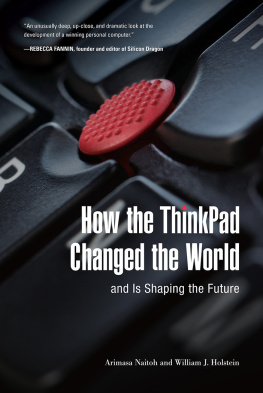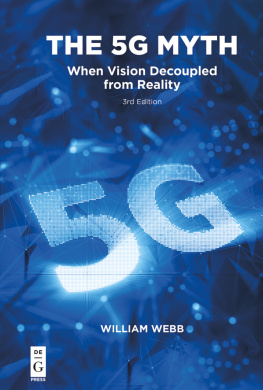Copyright 2017 by Arimasa Naitoh and William J. Holstein
All rights reserved. No part of this book may be reproduced in any manner without the express written consent of the publisher, except in the case of brief excerpts in critical reviews or articles. All inquiries should be addressed to Skyhorse Publishing, 307 West 36th Street, 11th Floor, New York, NY 10018. Skyhorse Publishing books may be purchased in bulk at special discounts for sales promotion, corporate gifts, fund-raising, or educational purposes. Special editions can also be created to specifications. For details, contact the Special Sales Department, Skyhorse Publishing, 307 West 36th Street, 11th Floor, New York, NY 10018 or .
Skyhorse and Skyhorse Publishing are registered trademarks of Skyhorse Publishing, Inc., a Delaware corporation.
Visit our website at www.skyhorsepublishing.com.
10 9 8 7 6 5 4 3 2 1
Library of Congress Cataloging-in-Publication Data is available on file.
Jacket design by Shigeyuki Kimura
Jacket photograph by Joel Collins
Unless otherwise indicated, all photos are courtesy of Lenovo.
Print ISBN: 978-1-5107-2499-0
Ebook ISBN: 978-1-5107-2500-3
Printed in the United States of America
Contents
Introduction
This book is about one of the technology worlds most successful creators. Yet, outside of Japan and China, few people have ever heard of Arimasa Naitoh, the father of the ThinkPad notebook computer. Naitoh has stayed with the ThinkPad and the team he built in Japan over the course of a quarter of a century, which is an eternity in the evanescent technology scene. The companies that have failed over that time period could fill an enormous electronic graveyardthink of Commodore or RCA or Zenith.
Naitoh and his team overcame the sorts of challenges that often destroy technology iconscomplacency, internal divisions, arrogance, or just plain shortsightedness. In the technology world, there is always a crisis, as Intels Andy Grove famously wrote in Only the Paranoid Survive . If you manage yourself as if there is no crisis, you will be surprised. Taking that cue, Naitohs team stayed focused and determined to win.
In so doing, they created a device that helped transform the world. Quite literally. The first ThinkPad, launched in 1992, was one of the first devices to enable what we today take for grantedthe ability to access our documents, pictures, and entertainment at any time from anywhere, all wirelessly. That capability has transformed the way the business world works, how educators teach the young, how science is performed and innovation is undertaken, how music and video are consumed, and many other aspects of modern human life.
The ThinkPad has been to the top of Mount Everest and to the depths of the ocean. Scientists used it to study biodiversity in the canopies of rain forests. The ThinkPad went on the first expedition to travel the entire length of the Blue Nile and Nile River. NASA enthusiastically embraced the machine, and it has served on both the International Space Station and the Mir space station. Because of one of its designs, the Butterfly, the ThinkPad is even part of the permanent collection at the Museum of Modern Art in New York.
The very concept of a road warrior, someone who can stay in touch with colleagues and conduct business from anywhere, whether from home or from a distant airport, was enabled by the ThinkPad. Rather than staying late in the office and missing out on quality time with their children, millions of professionals go home to have dinner with their families, only to turn on their notebook computers after the kids are in bed. That work-life balance has been made possible by the ThinkPad and other devices that followed in its wake. If you wish to, you can always be connected.
In contemplating the impact this machine has had, consider one statistic: more than one hundred million ThinkPads have been sold since its introduction, and many more will be sold by the time the ThinkPad reaches its twenty-fifth anniversary in October 2017. Very few other companies have sold devices on that scaleperhaps only Apple and Samsung Electronics, among the companies left standing. Nokia and Blackberry have been blown away.
Its impossible to determine, as I discovered, just how many models of the ThinkPad have been created and introduced. There have been four major generationsthe original launched by the 700C, the XTRA series that was unveiled in 2000 and 2001, the X300 that appeared in 2008, and the X1 that came out in 2011. In addition, a separate class of machines with an entirely different form factorthe ThinkPad Yoga and the ThinkPad X1 Yogaappeared in the 20132016 time frame.
An additional complicating factor, in terms of the number of models produced, is that IBM and later Lenovo, which purchased IBMs PC division including ThinkPad in 2005, customized machines for major corporate clients, and there were also different variations for different countries. Screens were twelve-inch, fourteen-inch, and fifteen-inch, all in different models. Is each of these considered a different model? A further complication is that no one kept track of just how many models were developed for possible introduction into the market and how many actually went on sale. The safest answer is that hundreds of models actually went on sale.
Nor does it seem possible to determine precisely how many patents are associated with the ThinkPad. IBMfor many yearsfiled for the most US patents of any company in the world. Some knowledge of who held which patents seems to have been lost when Lenovo bought the PC division. IBM retained certain patents but allowed others to move to the acquiring company. Lenovo today does not disclose just how many patents it holds on the ThinkPad for competitive reasons. But the number is clearly in the thousands. In researching this book, I met ThinkPad engineers who had forty to sixty patents each. Overall, many hundreds of very creative engineers have contributed to the ThinkPad over the decades. That very easily adds up to thousands of patents.
The story of how the ThinkPad has developed touches on every major technology trend in consumer electronics and communicationsthe miniaturization of computers (which used to fill large rooms), the first use of batteries to allow the devices to become mobile, the introduction of color screens, the rise of the Internet and wireless capabilities including the Bluetooth radio wave standard (which was created for the ThinkPad), and most recently, the growing use of touch screens to control and access computers. Any one of those technological transformations could disrupt an existing product or the company that makes the product, but Naitoh and his team kept anticipating these changes and incorporating them into the ThinkPad.
As a result, the ThinkPad is, in some ways, ahead of the field, including Apple. Partly thanks to the infusion of new ideas from China, the ThinkPad is no longer just a square box with a red TrackPoint in the middle of the keyboard. The ThinkPad Yoga and the ThinkPad X1 Yoga have 360-degree hinges that allow four screen positions to facilitate watching movies or referring to recipes in the kitchen. This so-called convertible segment of the personal computer market, featuring superthin ultrabooks and tablets, is the hottest-selling category.
Naitohs team also has been the first in the notebook world to adopt organic light-emitting diodes (OLED) on the ThinkPad X1 Yoga. Others are striving to catch up, but Naitohs team was first in figuring out the tricky issues of managing this breakthrough technology. OLED represents a leap over traditional liquid-crystal display (LCD) screens and offers stunning color and clarity. These new screens are also thinner than LCD screens, which will allow for the size of notebooks to be driven down further.











